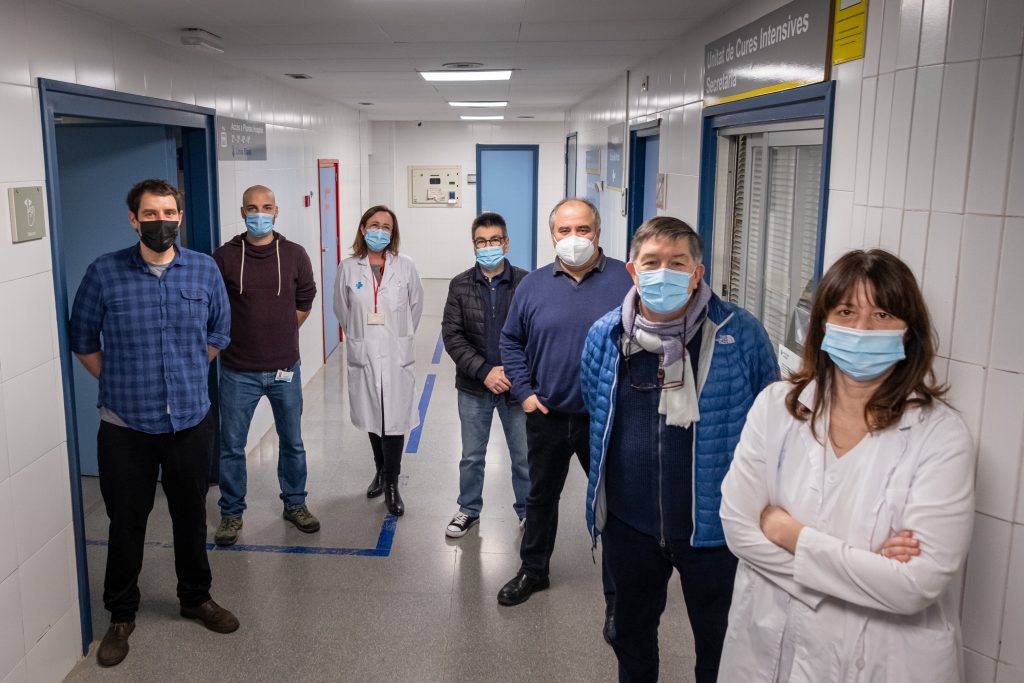12/02/2021
A mathematical model has been designed that predicts the success of extubating patients on intensive mechanical ventilation
The results of the study by a research team from the URV and the IISPV show a potential reduction of the current rate of reintubation from 9% to 1% by using machine learning tools. Data from a thousand intensive-care patients with respiratory difficulties has been processed and analysed to create this tool

The results of the study by a research team from the URV and the IISPV show a potential reduction of the current rate of reintubation from 9% to 1% by using machine learning tools. Data from a thousand intensive-care patients with respiratory difficulties has been processed and analysed to create this tool
Almost half the patients admitted to an intensive care unit (ICU) require invasive mechanical ventilation (IMV), a medical procedure that guarantees a sufficient supply of oxygen to their organs and tissues. The therapy involves connecting patients to a machine that substitutes their spontaneous breathing. In recent months it has been in general use in intensive-care patients affected by COVID-19.
Although it can often save a patient’s life, invasive mechanical ventilation is not risk-free: there can be accidental injury during intubation or extubation or the muscles involved in the breathing process can atrophy. So the doctors responsible for intensive-care patients have to find a balance between keeping patients intubated as long as they cannot breathe for themselves and not keeping them intubated any longer than necessary so that they can start their recovery. In accordance with current criteria, an extubation is regarded to have failed if patients have to be intubated again (reintubation) within 48 hours of having withdrawn invasive mechanical ventilation.
To prevent as many reintubations as possible, a multidisciplinary research team consisting of ICU doctors from the Joan XXIII University Hospital-Pere Virgili Institute of Health Research and the research group Ecommfit, from the Department of Mechanical Engineering of the Universitat Rovira i Virgili has developed a mathematical model that makes it possible to predict the result of an extubation practised in a critical adult patient on invasive mechanical ventilation.
The study was carried out with a massive, heterogeneous set of data from a variety of sources such as patient monitoring equipment, demographic data (age, sex, weight, etc.), clinical data obtained on admission to the ICU and records of incidents by the medical staff. By using machine learning techniques, researchers have been able to determine the complex relation between all these variables and create models that can reveal part of the complexity of all that is happening within the patient.
The research team from the ICU of the Joan XXIII University Hospital, led by Maria Bodí (head of the ICU) and the data scientist Josep Gómez collected data from approximately 1,000 patients with breathing difficulties who had been admitted to the ICU in the previous five years. Subsequently this data was processed and analysed by a research group from the Department of Mechanical Engineering led by Alexandre Fabregat.
The results of the study, published in the journal Computer Methods and Programs in Biomedicine, show that the current rate of reintubation of 9% can be reduced to 1%, thus minimising the risk for patients. The team is now focusing on incorporating this model into the ICU monitoring systems so that it can be readily accessed and used for fast predictions. When it has been fully developed, the model will be tested to show its effectiveness.
Bibliographical reference: Alexandre Fabregat, Mónica Magret, Josep Anton Ferré, Anton Vernet, Neus Guasch, Alejandro Rodríguez, Josep Gómez, María Bodí, “A Machine Learning decision-making tool for extubation in Intensive Care Unit patients”, Computer Methods and Programs in Biomedicine, 2020, 105869, ISSN 0169-2607, https://doi.org/10.1016/j.cmpb.2020.105869.
